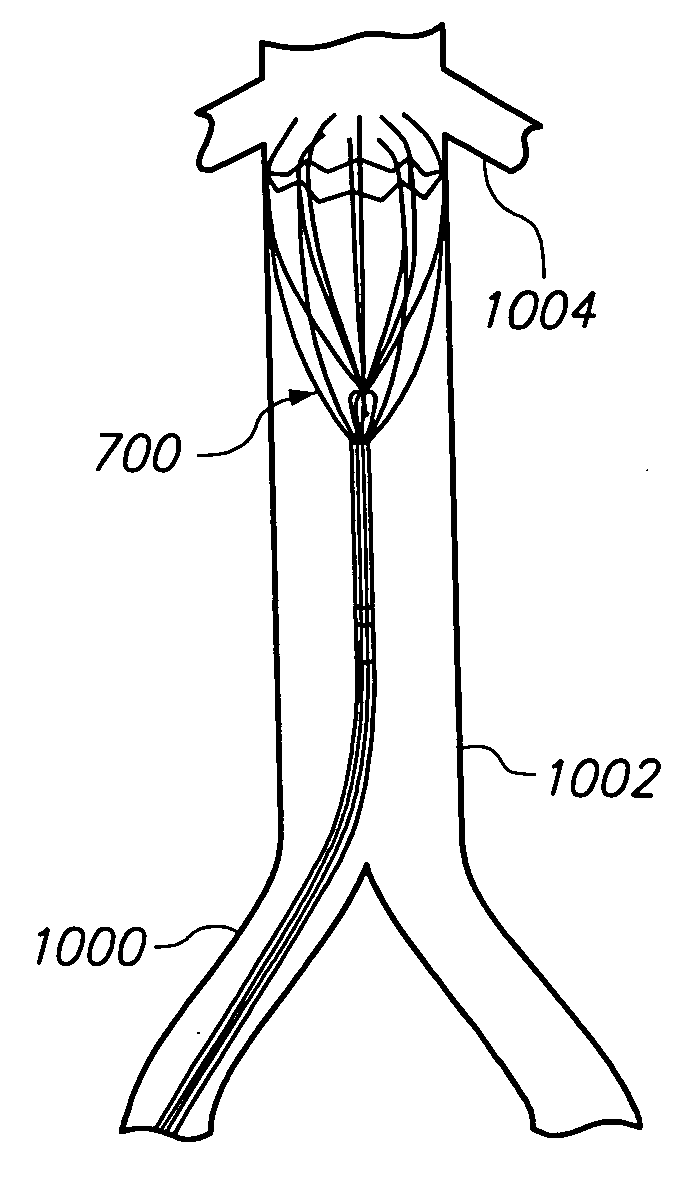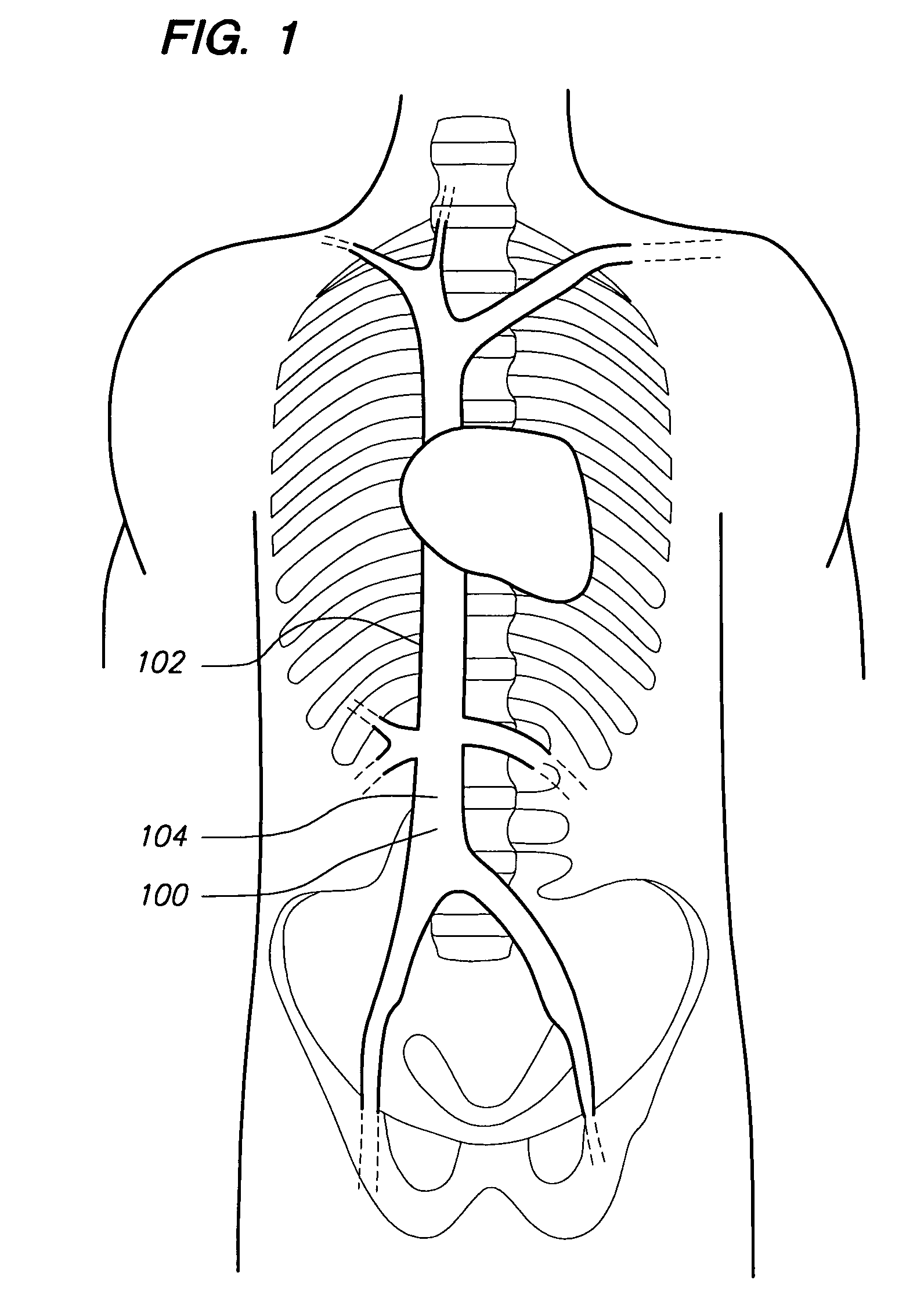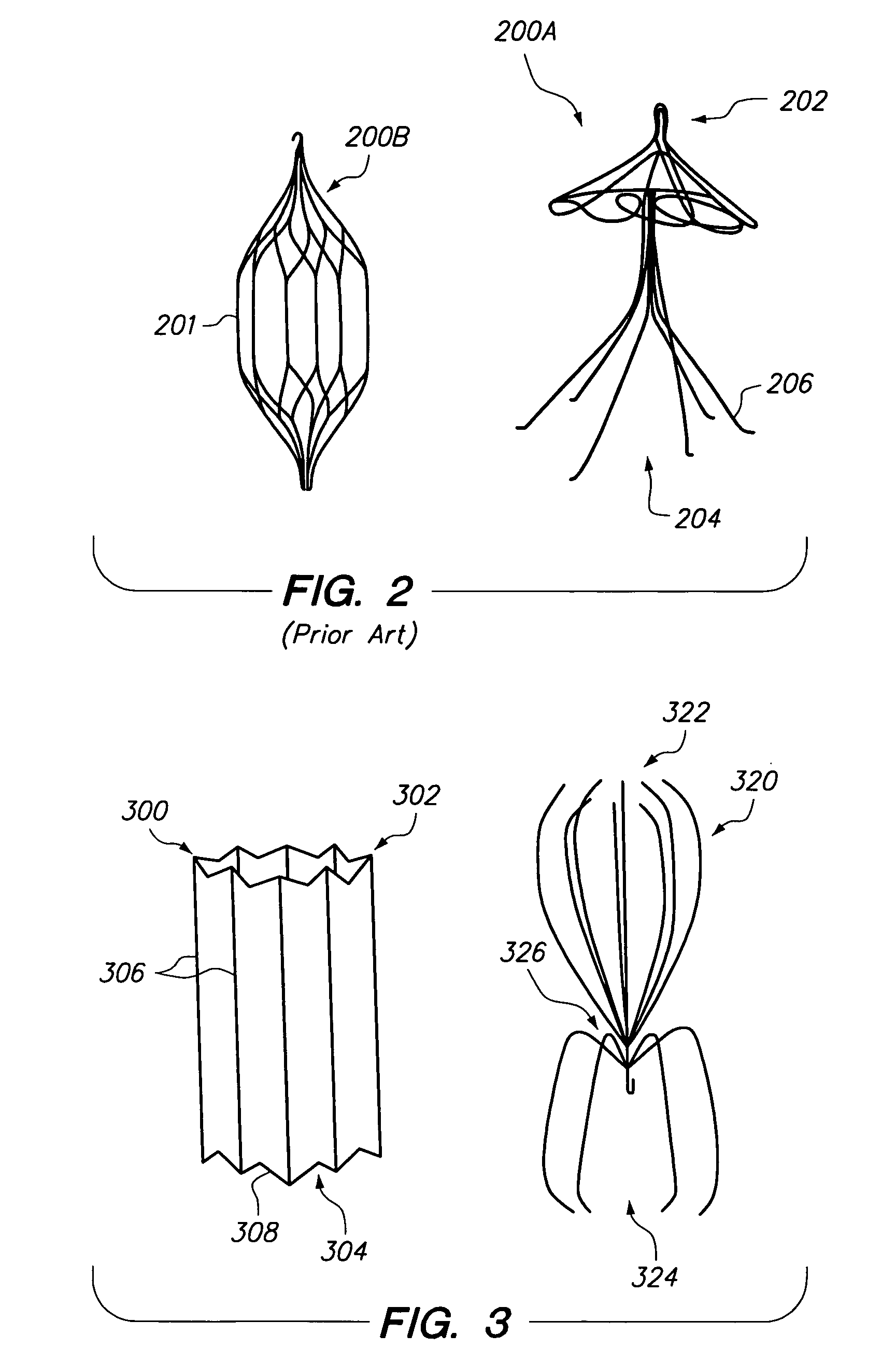Removable vascular filter and method of filter placement
a filter and vascular technology, applied in the field of vascular filters, can solve the problems of inefficient circulation, blood clots, and significant morbidity and mortality in the united states and throughout the world
- Summary
- Abstract
- Description
- Claims
- Application Information
AI Technical Summary
Benefits of technology
Problems solved by technology
Method used
Image
Examples
Embodiment Construction
[0045]In the following description, numerous specific details are set forth in order to provide a more thorough description of the present invention. It will be apparent, however, to one skilled in the art, that the present invention may be practiced without these specific details. In other instances, well-known features have not been described in detail so as not to obscure the invention.
[0046]One of the primary concerns regarding deep vein thrombosis (DVT) is that should the thrombus (blood clot) dislodge from the origination location, the thrombus may travel to another region of the circulatory system and cause injury and or death to the subject. For example, if a DVT dislodges it may migrate through the heart and eventually re-lodge in the lung of the subject thus causing a Pulmonary Embolism which prevents adequate circulation and can cause sudden death of the subject. By placing an intravenous filter in the inferior vena cava, the blood clot may be captured and prevented from ...
PUM
 Login to View More
Login to View More Abstract
Description
Claims
Application Information
 Login to View More
Login to View More - R&D
- Intellectual Property
- Life Sciences
- Materials
- Tech Scout
- Unparalleled Data Quality
- Higher Quality Content
- 60% Fewer Hallucinations
Browse by: Latest US Patents, China's latest patents, Technical Efficacy Thesaurus, Application Domain, Technology Topic, Popular Technical Reports.
© 2025 PatSnap. All rights reserved.Legal|Privacy policy|Modern Slavery Act Transparency Statement|Sitemap|About US| Contact US: help@patsnap.com



